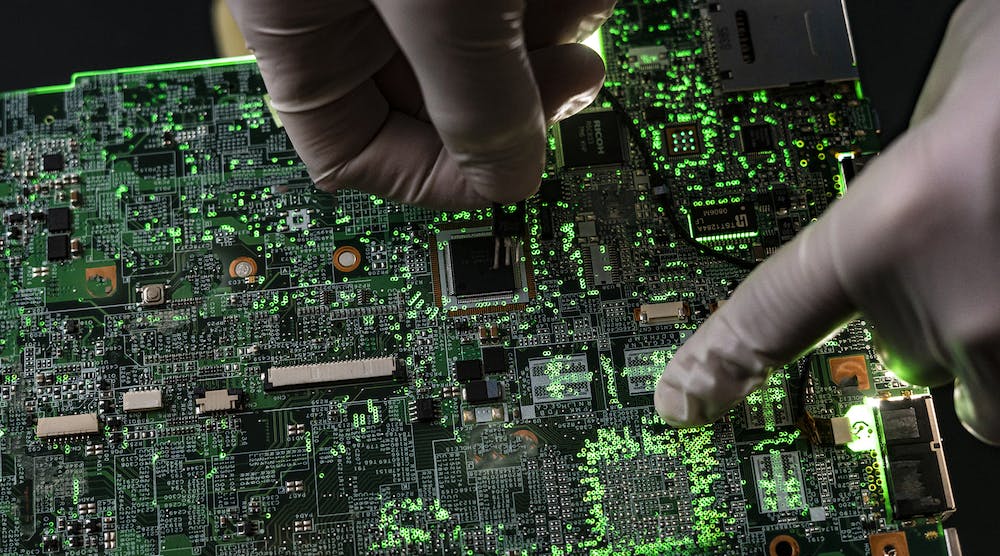Navigating the Fluctuating Electronics Supply Chain: Trends and Developments
- Release on:2024-01-05

The electronics supply chain has been in a constant state of flux over the past few years. With unpredictable economic circumstances and an uncertain geopolitical climate, disruption looks set to continue. Against this backdrop, it’s essential that business stay abreast of the latest trends and developments.
With inflation on the rise and disposable income declining, consumer demand for white goods, both mobile and computing have been negatively affected. Lead times are easing, and stock levels are growing with an inventory back up across all supply chains and notable backlogs in FABs (semi-conductor production facilities).
At present, procurement teams must closely monitor lead times and inventory levels to mitigate potential disruptions. Manufacturers need to take proactive measures to secure supply chains by placing orders long in advance and maintaining good communication with suppliers. This isn’t always easy; Unpredictable demand has led to increased requests for cancellations and rescheduling, which in turn has changed the way manufacturers are imposing terms onto distributors and customers.
They are urging distributors to push their customers for commitment to long-term orders and are increasingly enforcing NCNR (Non-Cancellable Non-Returnable) terms. While this improves order planning and stability, it requires a reliable forecast on long-term requirements and can be difficult for the customers.
April Market Spotlight
Discrete and Optoelectronics
Lead times have been reduced due to lower consumer demand. The product market for discrete devices and optoelectronics is experiencing a slowdown due to the ongoing market correction and high inventory levels. The high stock levels have stabilized and are expected to remain at high levels throughout Q2. However, demand for these components from the automotive, industrial and energy sectors is stabilizing or growing. Lead times are generally decreasing into Q2 except for power technologies where they are still limited in supply until 1H 2023.
Passives
Raw material prices have a significant effect on the pricing in this market. Demand for passive components is expected to increase significantly. This increased demand, along with the high quantities required per board, will result in factory capacity limitations. Automotive products are experiencing extended lead times with no signs of easing yet. Lead times have been reduced for standard technologies but for electrolytic, hybrid capacitors and special-purpose resistors lead times have been extended.
Interconnect and Electromechanical
Lead times for relays are extended where they are estimated to be 30 weeks. Suppliers of these components are expected to increase prices due to raw material prices. The inventory levels are increasing for connectors and lead times are relatively short with an average of 10-20 weeks.
Microcontrollers, Microprocessors and FPGA
As per Q1, the consumer market is slowing down and there is reduced global demand for goods made in China. The average lead time for these components is 22-26 weeks. NXP and Renesas have increased their prices since January and Microchip since March. Capacity issues in Q1 have resulted in manufacturers continuing to impose NCNR terms for distributors and customers. There is still a backlog of manufacturing, especially in EMEA, and to help with the recovery, supply is expected to tighten again.
Analog and Memory
The production costs for analog and memory components remain high due to the combination of inflation, heightened costs and declining disposable incomes. Price reductions are unlikely due to the costs of investment needed to improve capacity. The plan for FAB investments is being led by both the European and North American Chip Act to continue to reduce the reliance on FAB capacity outside of Taiwan.
Raw Material Prices
| Material | Increase / Decrease | Price Changes |
| Copper | Increase | 1.70% |
| Nickel | Increase | 4.60% |
| Tin | Decrease | 20% |
| Plastics (PE) | Decrease | 7% |
| Lithium | Decrease | 26% |
Component Lead Times
Technology: Logic
Manufacturer & Lead Time (Weeks)
- Nexperia | 26-45
- On Semiconductor | 26-52
- Texas Instruments | 12-35
Technology: Linear
Manufacturer & Lead Time (Weeks)
- STM | 16-40
- Texas Instruments | 50-60
- On Semiconductor | 12-16
- Vishay | 14-18
Technology: Data Converters
Manufacturer & Lead Time (Weeks)
- Analog Devices | 32-38
- Texas Instruments | 25-70
- STM | 30-35
Technology: Power Management
Manufacturer & Lead Time (Weeks)
- STM | 30-40
- Texas Instruments | 50-60
- Infineon | 30-45
- Analog Devices | 30-34
Technology: 8 Bit
Manufacturer & Lead Time (Weeks)
- NXP | 52-65
- Microchip | 32-75
- STM | 45-65
- Infineon | 28-52
Technology: 16 Bit
Manufacturer & Lead Time (Weeks)
- Texas Instruments | 35-70
- Infineon | 24-52
- NXP | 52-65
- Microchip | 32-75
- STM | 45-65
Technology: 32 Bit
Manufacturer & Lead Time (Weeks)
- Microchip | 32-75
- NXP | 52-99
- STM | 52-65
- Infineon | 20-52
Technology: DSP
Manufacturer & Lead Time (Weeks)
- Analog Devices | 18-26
- NXP | 52-65
- Texas Instruments | 35-70
Information provided by TechPoint's Monthly Market Update.
